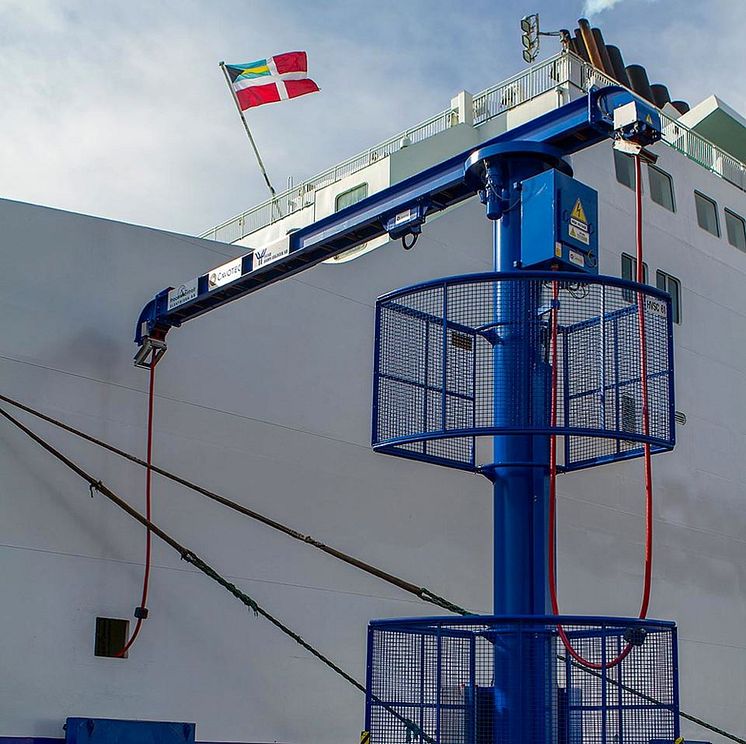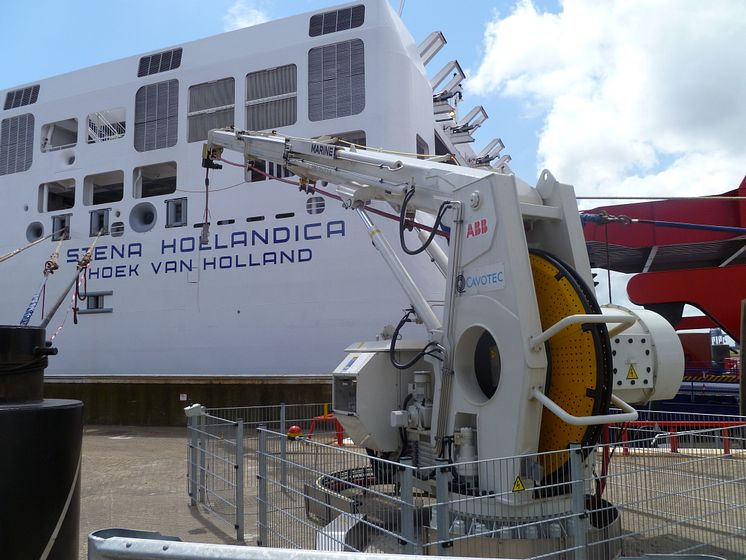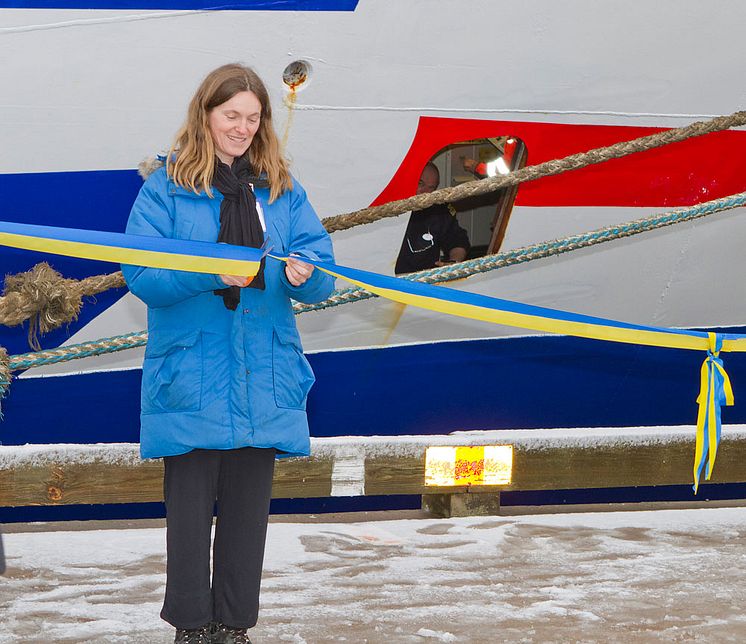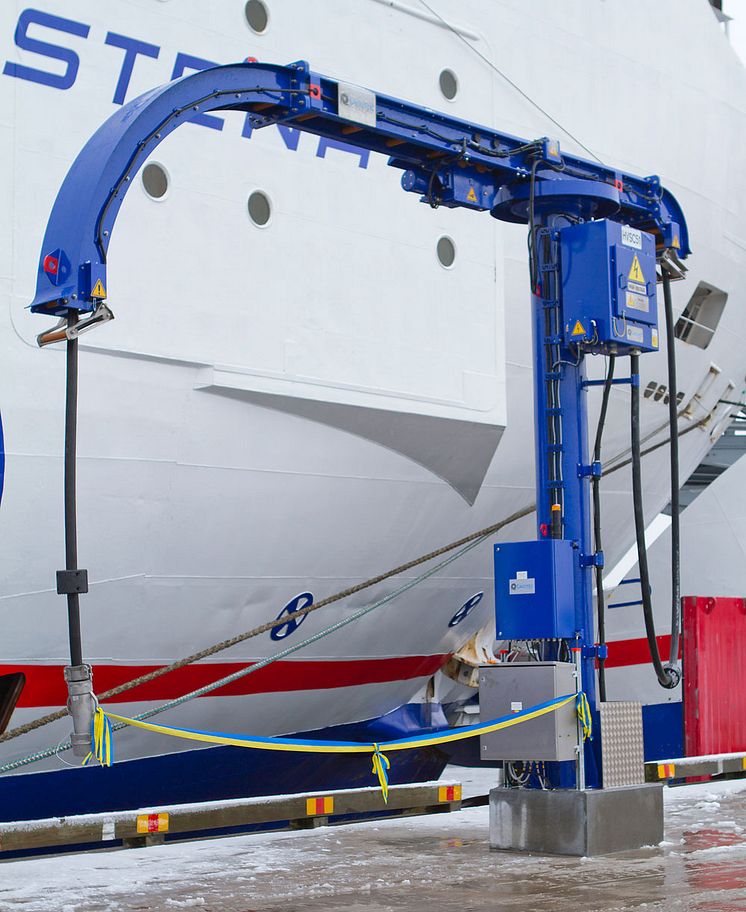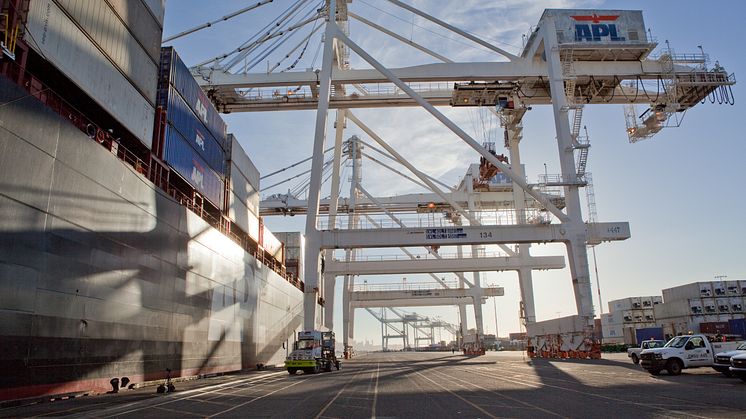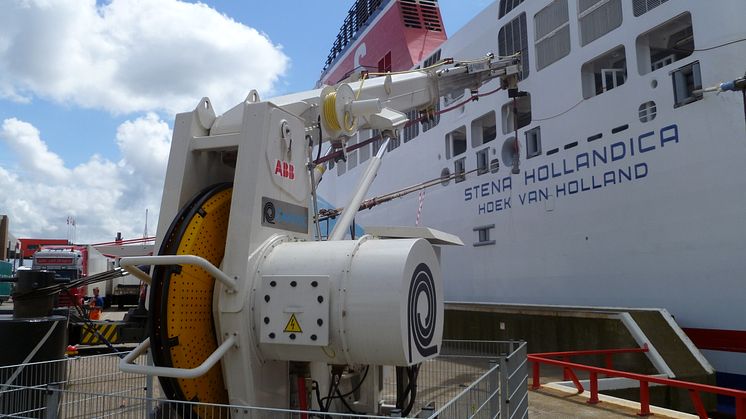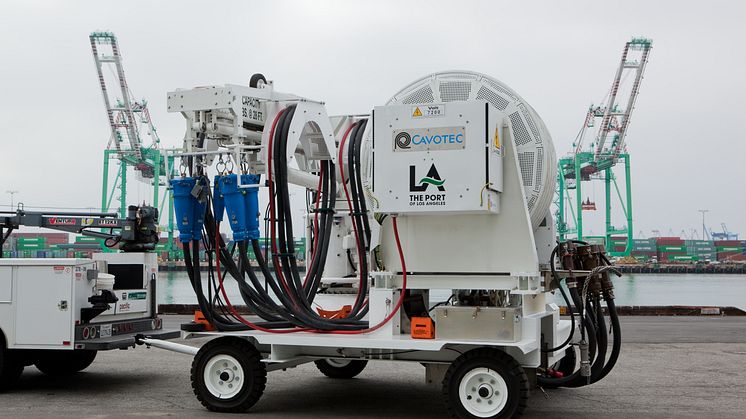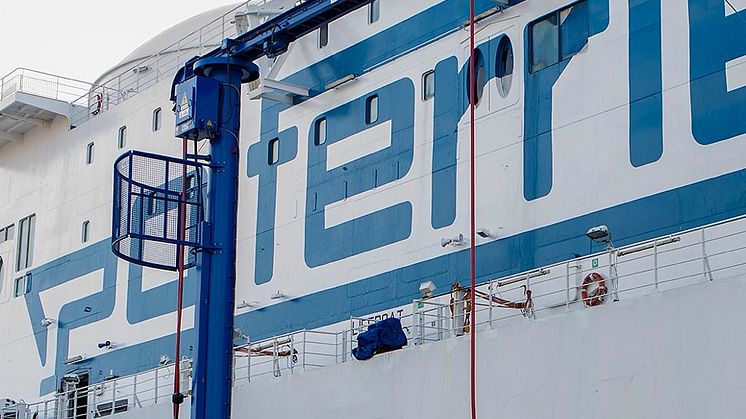
Blog post -
Official opening of Cavotec shore power systems at Port of Ystad - world’s largest high voltage shore connection
In September, we were delighted to see Swedish environment minister Lena Ek officially open a Cavotec Alternative Maritime Power (AMP) shore-to-ship electrical application at the Port of Ystad in southern Sweden - the largest high voltage shore connection anywhere in the world. Ystad is the latest of a growing number of Swedish ports that have adopted Cavotec’s shore power systems: technologies that enable ports to substantially improve environmental performance.
“Our shore power systems are now in use at several Swedish ports, demonstrating our growing role in making dramatic improvements to air quality in the industry. With the onset of stricter environmental requirements, this is a role we anticipate will expand in the years ahead,” says Cavotec Chief Executive Ottonel Popesco.
The Ystad installation, incorporating four passenger ferry berths, is used by Polferries and Unity Line for their sailings to the Polish city of Świnoujście. Ystad is Sweden’s third largest port in terms of passenger numbers.
You can see some images of the application on our Facebook page.
Working closely with local partners Processkontroll Elektriska and industrial group ABB, Cavotec supplied the cable management systems that enable vessels to connect to the local electricity grid while docked, thus reducing particulate matter emissions and so improving air quality in the port and surrounding communities.
Ystad is the latest of a number of Cavotec shore power installations in Sweden. The Port of Stockholm, the Port of Gothenburg, the Port of Trelleborg and the Port of Karlskrona all use Cavotec AMP systems. The first such system came on line in the ports of Gothenburg and Stockholm in the 80s. The Group’s shore power systems are also increasingly widely used at ports on the US west coast, as well as in Canada, Europe and the Far East.
Cavotec AMP systems make it possible for vessels to switch off their engines while docked and to connect to shore side electricity. Services such as power supply for reefer containers, lighting, heating, food preparation and cargo handling are then run directly from the port. Switching off ships’ engines and connecting to grid-generated electricity reduces fuel consumption and dramatically cuts emissions.

